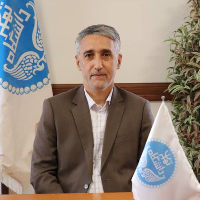Analysis of effective factors on integrated local management in peripheral rural settlements of Tehran metropolitan
In recent decades, the growth and development process of cities, especially megacities, has gained a very high speed. This issue has been accompanied by a significant increase in population and activity in these cities. The excessive growth of the population in the metropolises has affected the physical development of the cities and their surrounding areas and has caused major changes and transformations in the rural settlements located around them. Among these challenges are the lack of services and facilities needed by the residents, the physical disorder of the settlements, unauthorized and unprincipled constructions, encroachment on national lands and natural resources and land use change, land and housing stock exchange, as well as social-cultural issues and problems in rural settlements within the city limits. Tehran pointed out that the main reason for these issues is the lack of a coherent and efficient management system. For this reason, in the current research, the integrated management model of the peripheral villages of Tehran has been studied as an efficient and alternative approach to the traditional approaches for managing the peripheral villages of Tehran city. Therefore, the main goal of this research is to explain the integrated management model of the peripheral villages of Tehran city. The statistical population of this research is the number of 34 rural settlements located in the metropolitan area of Tehran, all of which have been studied as samples. The target community of the research included experts of executive bodies (national headquarters, province and city), local managers (villagers and members of the Islamic council of villages) and local knowledgeable people. The main tool for collecting data is a questionnaire and a total of 350 questionnaires have been distributed and completed. Indeed, statistical tests (chi-square, one-sample t-test, linear regression, and path analysis) were used to analyze the data. The study's findings indicate that the among these factors, the policy and planning factor has the most effect. And after that, institutional-executive, social-cultural factors, laws and regulations, economic and financial resources, and spatial factors have the greatest effect.
-
The Social Constructivism Paradigm, the Hermeneutic-Dialectic Methodology, and the Fourth-Generation Evaluation: Prospects for Application in Tourism
Amirhossein Imanizadeh, Mohammadreza Rezvani *
Journal of tourism and development, -
Spatial Distribution Analysis Of Fig Product Value Chain(Study Case: Rural Areas Of Kohmareh District, Kohchenar City, Fars Province)
Mohammadreza Rezvani *, Alireza Darban Astane, Hossein Hosseinpour
Journal of Economic geography research, -
Assessment and explanation of the influential dimensions of social capital in the process of rural areas development (Case study: Dasht-e Arzaneh District, Bakharz County)
Sajad Amiri *, Seyed Amir Hossein Garakani, Hossein Zinati Fakhrabad,
Journal of Village and Space Sustainable Development, -
A Systematic Review of the Explanation of the Integrated Framework of Local Management in Peri-Urban Villages (2010-2020)
Alireaza Darban Astane *, Mohammadreza Rezvani, Mojtaba Ghadiri Masoum,
Journal of Rural Research,




